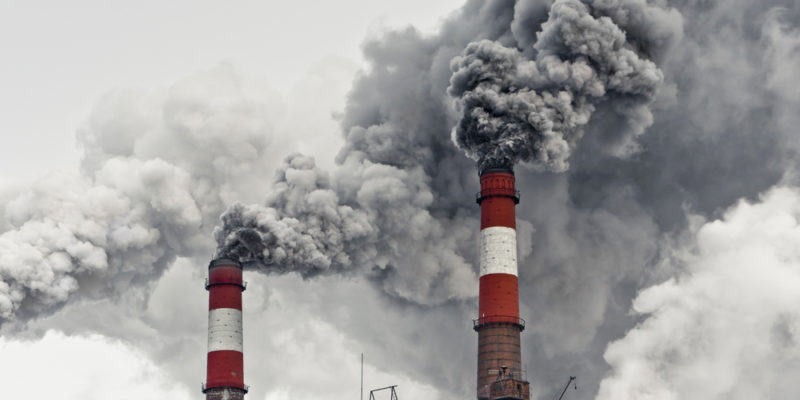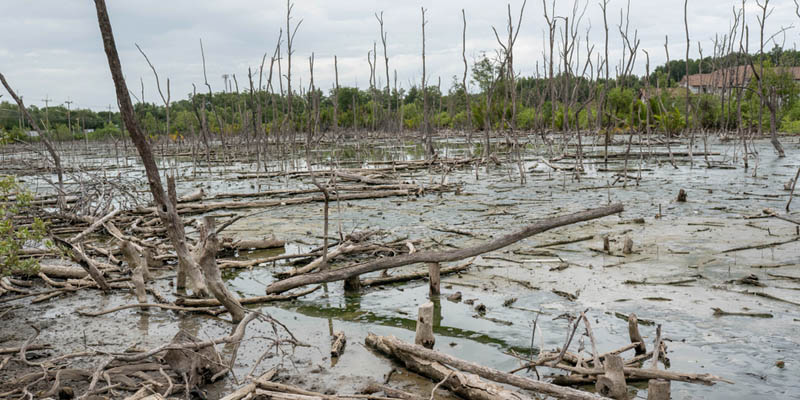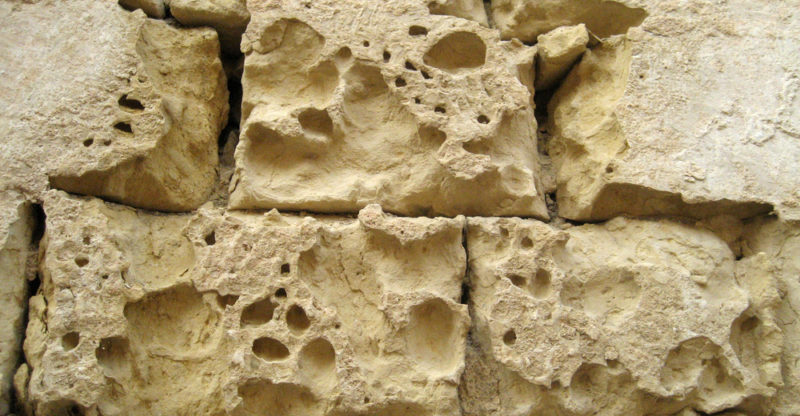We explain what acid rain is, and explore its causes and effects. In addition, we discuss its characteristics and solutions.

What is acid rain?
Acid rain is a type of precipitation that has a higher than normal acidity. The acidity of substances is measured through pH, which can range from 0 for the most acidic substances, to 14 for the most basic. A substance with a pH of 7 is considered neutral.
Normal rain has a slightly acidic pH of 5.6. This pH value is due to the natural presence of carbon dioxide (CO2) in the atmosphere, which forms carbonic acid (H2CO3) when in contact with the water vapor in the air.
For rain to be considered acidic, it must have a pH lower than 5. In some cases, precipitation has been observed to reach pH levels as low as 3, a value well below normal parameters (approximately the pH of vinegar).
Although acid rain can occur as a consequence of natural phenomena, such as volcanic eruptions, in recent years atmospheric pollution has significantly increased the occurrence of this type of rain in many areas in the world.
- See also: Natural disasters
Causes of acid rain
Acid rain is caused by the presence of sulfur dioxide (SO2), sulfur trioxide (SO3), and nitrogen oxides (NxOy) in the water vapor in the air. The majority of these substances originate from human activities that use fossil fuels, such as thermal power generation, industrial activities, and transportation.
Wildfires can contribute to the formation of acid rain. When forests burn, large amounts of gases like carbon dioxide, carbon monoxide, nitrogen oxide, sulfur, and other volatile organic compounds are emitted.
Once these gases are released into the atmosphere, they can react with other atmospheric pollutants like nitrogen oxide or sulfur dioxide to form sulfuric acid and nitric acid, which then fall to the surface as acid rain.
Acid rain may also be caused, to a lesser extent, by natural sources such as volcanic eruptions. During a volcanic eruption, large amounts of sulfur dioxide, nitrogen oxides, hydrochloric acid, and hydrofluoric acid, among other gases and particles, are released.
The sulfur dioxide released in a volcanic eruption reacts with the water vapor in the atmosphere to form sulfuric acid, while nitrogen oxides can react with other atmospheric compounds to form nitric acid. These acids then fall to earth in the form of acid rain.
How is acid rain formed?

Acid rain forms when nitrogen oxides, sulfur dioxide, and sulfur trioxide mix and react with the water in the atmosphere to form nitric acid (HNO3) and sulfuric acid (H2SO4).
These acids mix with moisture in the atmosphere in the form of water vapor, and then fall mixed with rainwater.
Primary pollutants are substances emitted directly into the atmosphere, such as sulfur dioxide, nitrogen oxides, and volatile organic compounds, among others. These pollutants can react with other compounds in the atmosphere, like water, oxygen and other gases, forming secondary pollutants, such as sulfuric acid and nitric acid, which are the main components of acid rain.
Sulfur dioxide, carbon dioxide, and nitrogen oxides come into contact with water vapor, air, atmospheric oxidants, and sunlight. Chemical reactions then occur between these components, generating sulfuric acid and nitric acid, the chemical compounds that make up acid rain.
Some of the chemical reactions involved in the formation of acid rain are:
Formation of sulfur dioxide (SO2)
From the reaction of sulfur (S) with molecular oxygen (O2). Sulfur can be generated from emissions of dimethyl sulfide (CH3)2S or hydrogen sulfide (H2S).
- S + O2 → SO2
Formation of sulfurous acid (H2SO3)
Fom sulfur dioxide (SO2) and water (H2O).
- SO2 + H2O → H2SO3
Formation of sulfur trioxide (SO3)
From the reaction between sulfur dioxide (SO2) and molecular oxygen (O2).
- 2SO2 + S2 → 2SO3
Formation of sulfuric acid (H2SO4)
From sulfur trioxide (SO3) and water (H2O).
- SO3 + H2O → H2SO4
Formation of nitric acid (HNO3)
From the reaction between nitrogen dioxide (NO2) and water (H2O).
- 3NO2 + H2O → 2HNO3 + NO
Which countries are most affected by acid rain?

The areas most affected by acid rain worldwide are those with the highest emissions of gaseous pollutants.
- Central and Eastern Europe. These regions have suffered the effects of acid rain since the 1960s due to sulfur and nitrogen emissions from burning coal and oil in power plants. Germany, Poland, and Romania are among the most affected countries.
- Northeastern North America. The Great Lakes region in the United States and southern Canada also suffer the consequences of acid rain as a result of pollution from industries in the region.
- East Asia. China, Taiwan, South Korea, and Japan have experienced a significant increase in acid rain episodes in recent decades due to rapid industrialization.
- Areas near volcanoes. Some countries like Indonesia, the Philippines, and Mexico have experienced acid rain events as a consequence of eruptions from volcanoes such as Merapi (Indonesia), Pinatubo (Philippines), and Colima (Mexico), among others.
Effects of acid rain
Effects on aquatic ecosystems
In China, pollution is particularly serious, as 70% of electrical energy is derived from coal burning.
Likewise, countries located in the northern part of the Northern Hemisphere are greatly affected by acid rain: the Netherlands and other countries in Northern Europe, the United Kingdom, the United States, and Canada.
Effects on aquatic animals

Acid rain lowers the pH of the water in lakes, rivers, and oceans, which may have negative effects on organisms in aquatic ecosystems. A lower pH can damage the gills of fish, potentially causing breathing difficulties and other alterations in the function of their organs.
Furthermore, acidification can reduce the water's capacity to hold oxygen, leading to fish kill and the death of other aquatic organisms.
Acid rain can also harm aquatic plants and invertebrates. Plants may suffer leaf damage as their ability to perform photosynthesis is hindered. Invertebrates such as snails and aquatic insects are also affected by the decrease in the pH of water, which negatively impacts their growth and reproduction.
Effects on humans
Acid rain can have negative effects on human health. When acids brought by acid rain are breathed in, these pollutants can reach the lungs causing respiratory problems. Prolonged exposure to these gases can also increase the risk of developing heart disease.
Additionally, humans may consume food of both plant and animal origin containing toxic substances absorbed through the soil or water, which may pose a health risk.
The same applies to the consumption of water contaminated by acid rain gases, which can cause gastrointestinal diseases and kidney damage.
Effects on soil and plants

Soil acidification leads to the release of toxic metals that hinder the absorption of nutrients by plants. Moreover, acid rain can affect the microorganisms present in the soil, and dissolve its nutrients, impoverishing its quality and fertility.
Finally, it can damage leaves and plant tissues, weakening them and making them more susceptible to diseases and pests.
Effects on the economy

Various sectors of the economy are affected by the consequences of acid rain.
The most affected sector is agriculture. This activity may see a reduction in production, since without the necessary nutrients in the soil, plants cannot achieve their full growth, which may significantly reduce production and profit margins. Furthermore, reduction in the production of agricultural raw materials may impact food prices.
Fishing and fish farming is another sector directly affected, as the effects of acid rain on fish reproduction and water quality reduce production and profit margins.
Effects on man-made structures and materials

In addition to being a danger to living beings, acid rain causes corrosion in the materials of buildings, bridges, and pipelines.
For example, buildings and monuments made of limestone or marble are especially vulnerable to the corrosive effects of acid rain. The acids in these rains dissolve calcium carbonates, leaving monuments and structures with a rough surface and a discolored appearance.
Possible solutions to acid rain
Among the solutions currently adopted by governments is the implementation of new protocols for reducing sulfur dioxide and nitrogen oxide emissions from industries.
Vehicle emissions are also a major source of nitrogen oxides. For this reason, many countries are implementing policies to control vehicle emissions and are promoting the use of more sustainable types of vehicles.
References
- Juste, I (2022). Lluvia ácida: definición, causas y consecuencias. Ecología verde. https://www.ecologiaverde.com/
- Montalvo, F. y Escobar, D (2011). Lluvia ácida de origen volcánico. Servicio Nacional de Estudios Territoriales.
- National Geographic (2023). ¿Qué es la lluvia ácida y por qué se produce? https://www.nationalgeographic.es/
- Granados Sánchez, D. López Ríos, G. F. y Hernández García, M. Á (2010). La lluvia ácida y los ecosistemas forestales. Revista Chapingo serie ciencias forestales y del ambiente. Versión On-line ISSN 2007-4018. Versión impresa ISSN 2007-3828
Explore next:
Was this information useful to you?
Yes NoThank you for visiting us :)